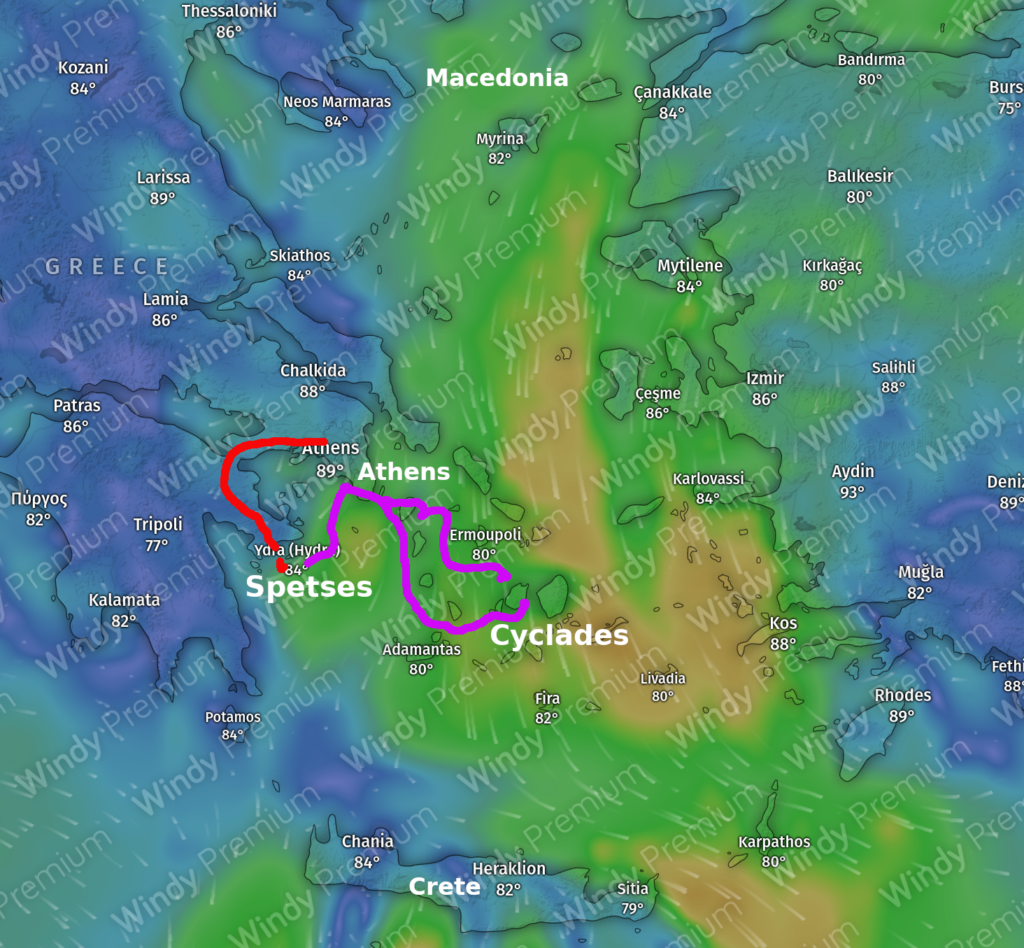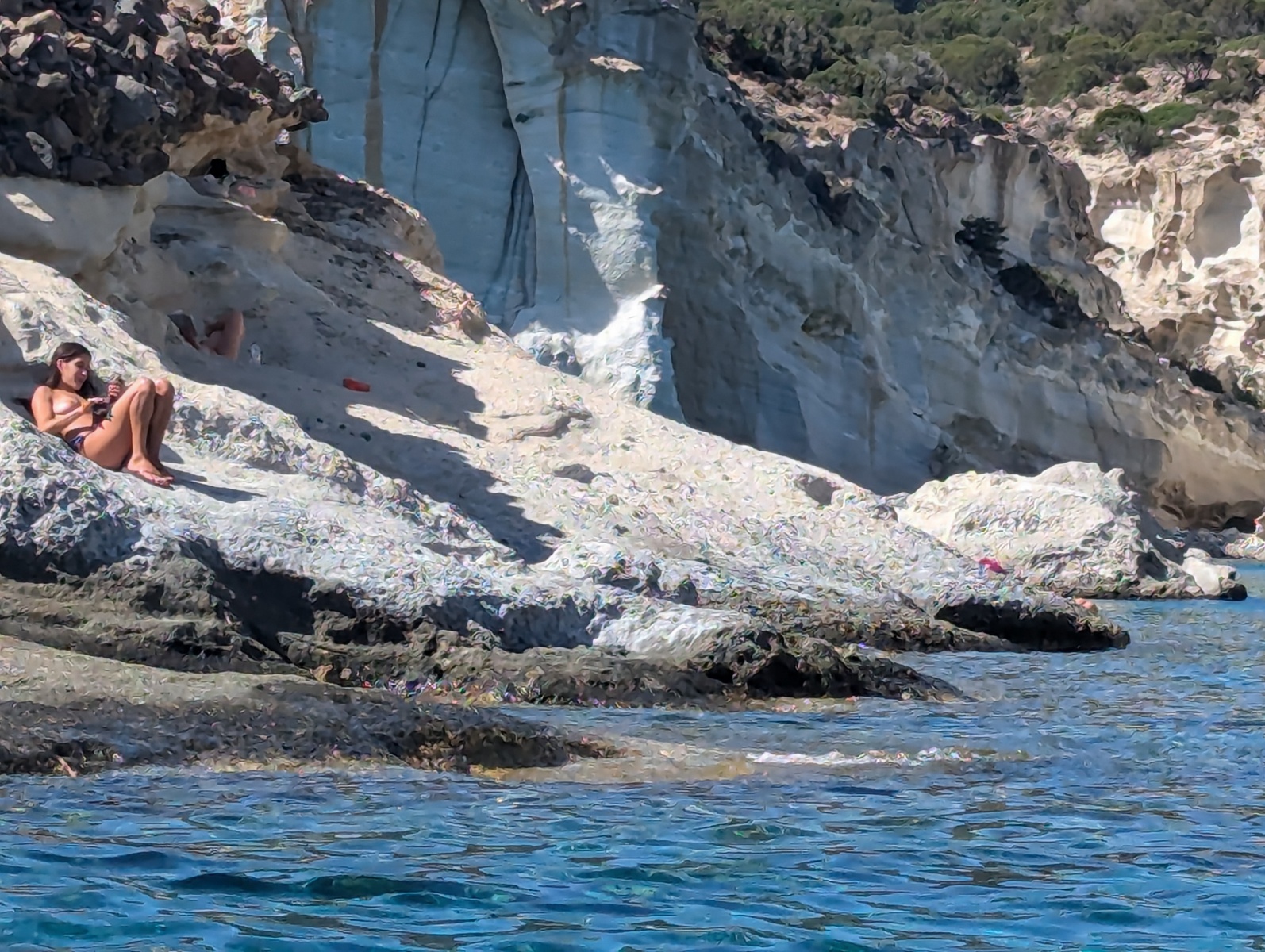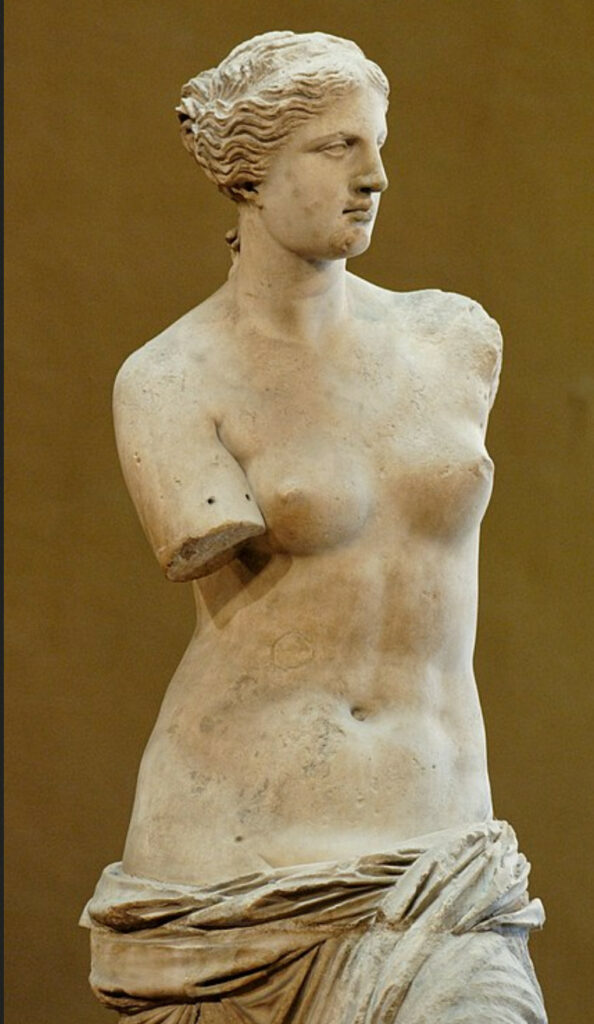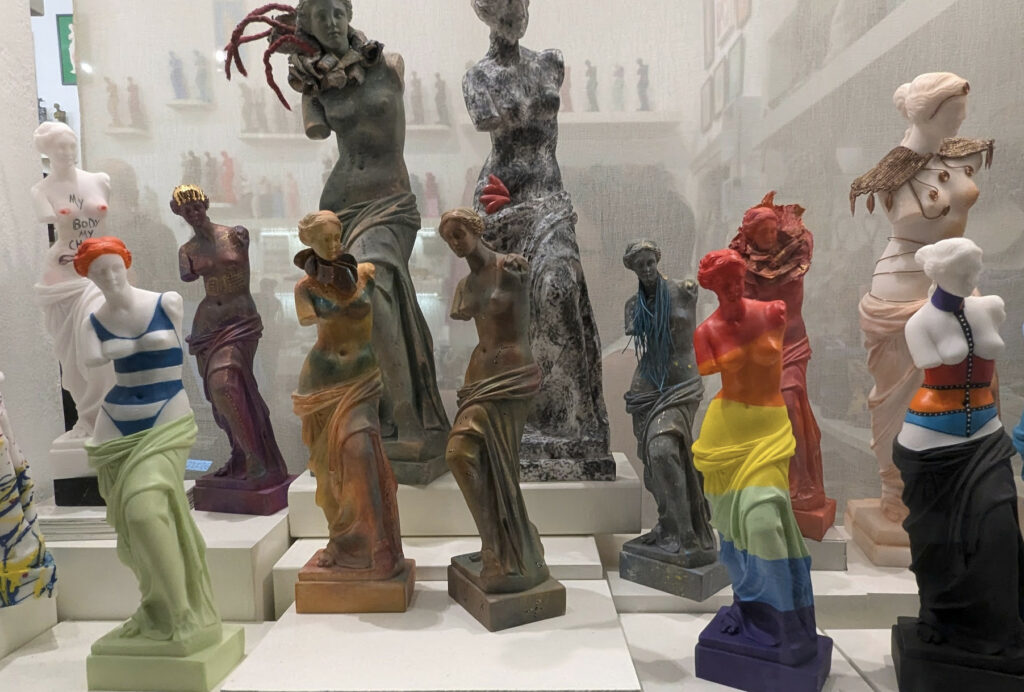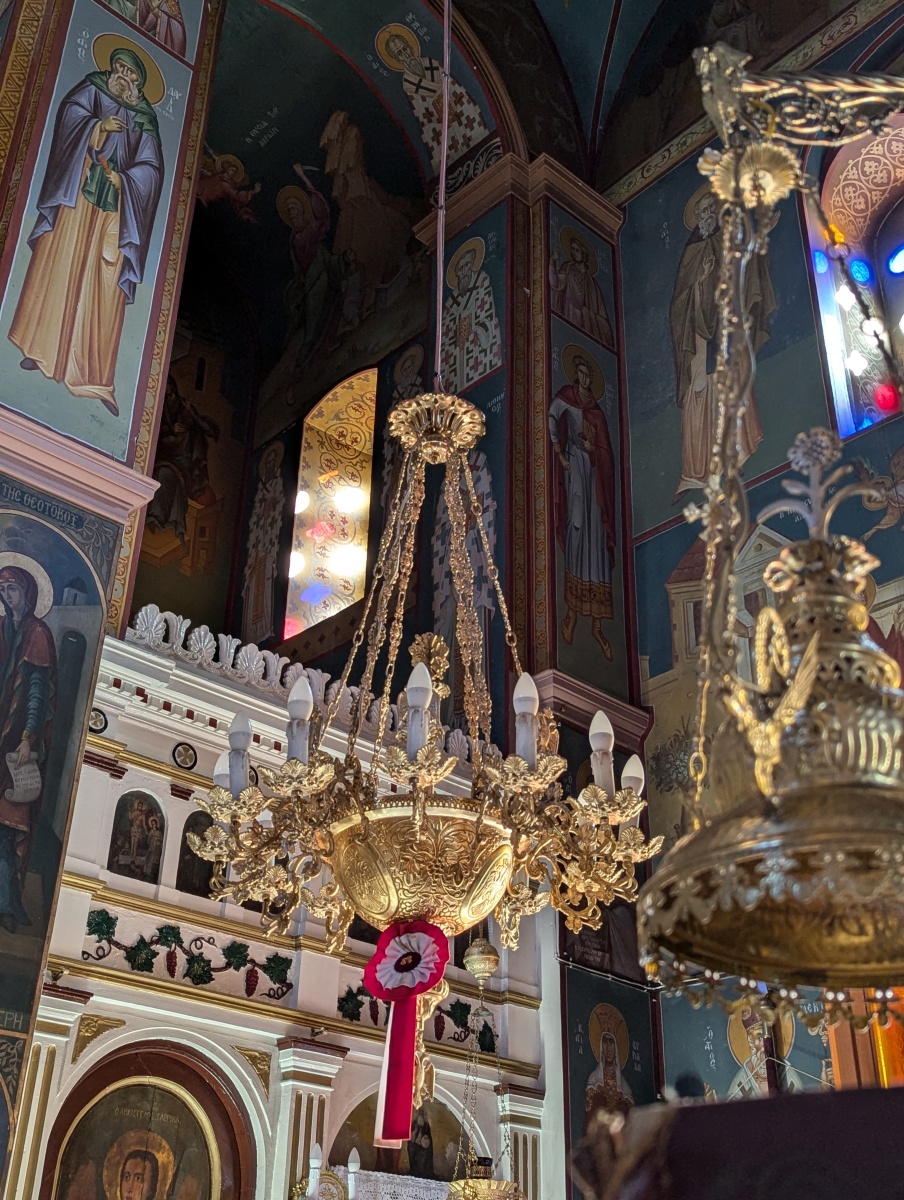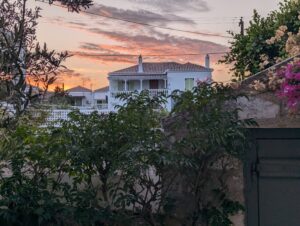Last week we visited the island of Spetses with 15 friendly family members staying with Annie’s step-dad, Dino and her mom, Madeline. Now this week, Scott and Annie and Leslie and Val have gone off with our grandchildren, Liam and Cora and three of their teen-age friends. We are all on a 46′ Lagoon catamaran in 4 double cabins and our captain and crew have relegated themselves to bunks in the bows of the two hulls.
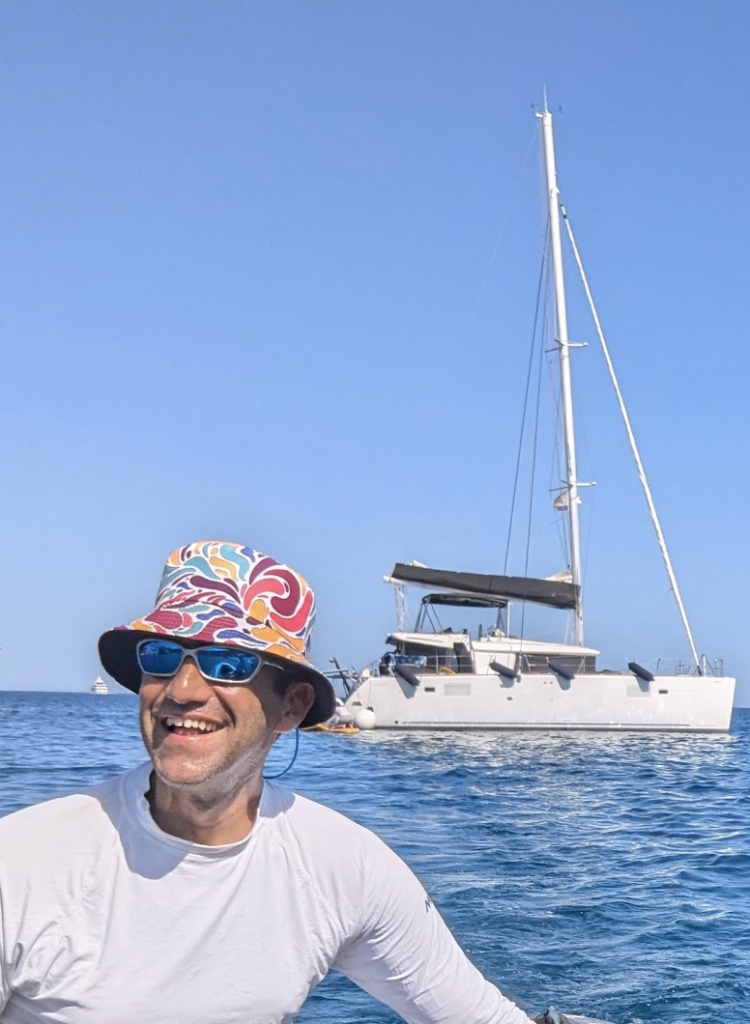

Aristides and Katerina were excellent guides and hosts as they knew of many places that we could tuck in for a beautiful snorkels or take historic village walks. And each day all such activities were supported by Katerina’s choices of typical Greek foods for the many meals that she prepared for we 9 individuals.
We sailed south and then east from Athens into the Cyclades island group. The wind, especially in the afternoon, was quite strong from the north. This is the famous ‘meltemi’ which blows south from Macedonia many days in the summer. It is the result of high pressure over southeastern Europe and low pressure which develops over the hot deserts of the Middle East with the result that a strong northerly wind descends over Greece. This is often the strongest wind in all of Europe at these times. The highest winds we saw were in the mid-30 knot range. This is enough wind to make these huge catamarans, with their relatively small sails, go. We ran downwind to the southern end of the Cyclades and island-hopped motor-sailing northward against the wind as we spent a week returning to Athens.
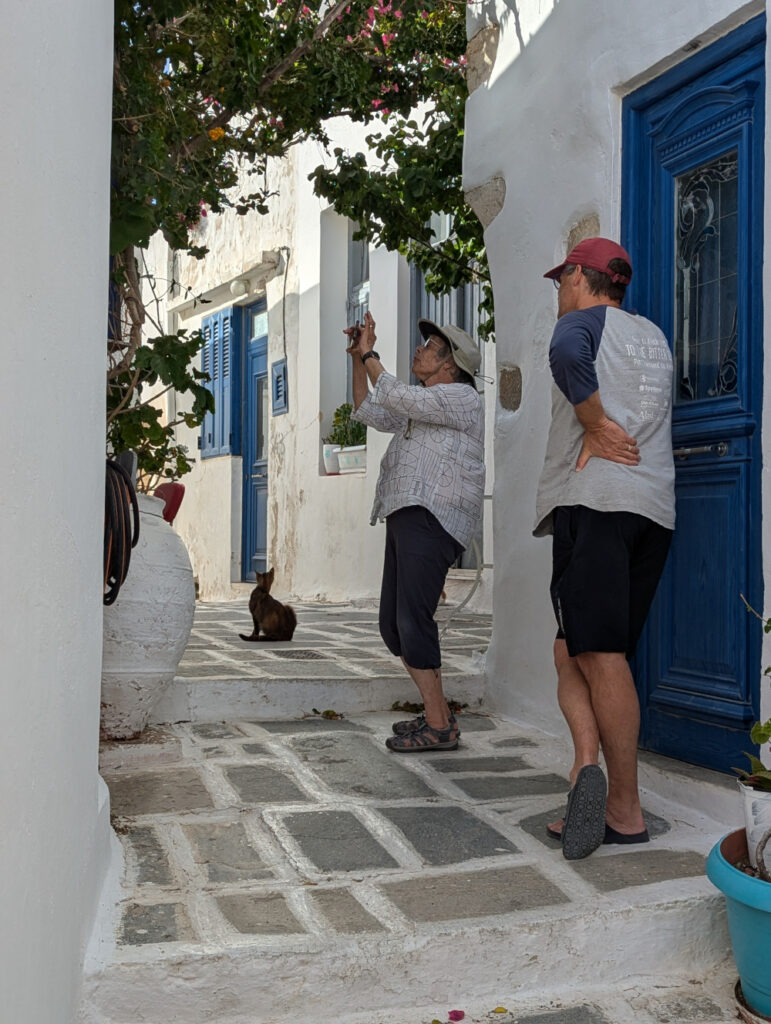
We visited many beautiful natural areas and many working harbors with docks right up against steep hills covered with white houses many with blue trim. Blue and white are the colors of the Greek flag. Some say that this is the reason for the color uniformity. This does create lovely landscapes. Here Leslie and Scott and one of many cats are in the village of Serifos at the top of the mountains that make up the island of Serifos. As it turns out, we were standing on the top of a mythical kings head as that man had decided to sneak a peak at Medusa’s now severed head and was turned into stone!
We dropped anchor outside a collapsed and huge volcanic sea cave called Paralia Sikia (Παραλία Συκιά) on the island of Milos. We used our dingy to get into the cave through a small opening and there the striking volcanic geology is nearly overwhelming.
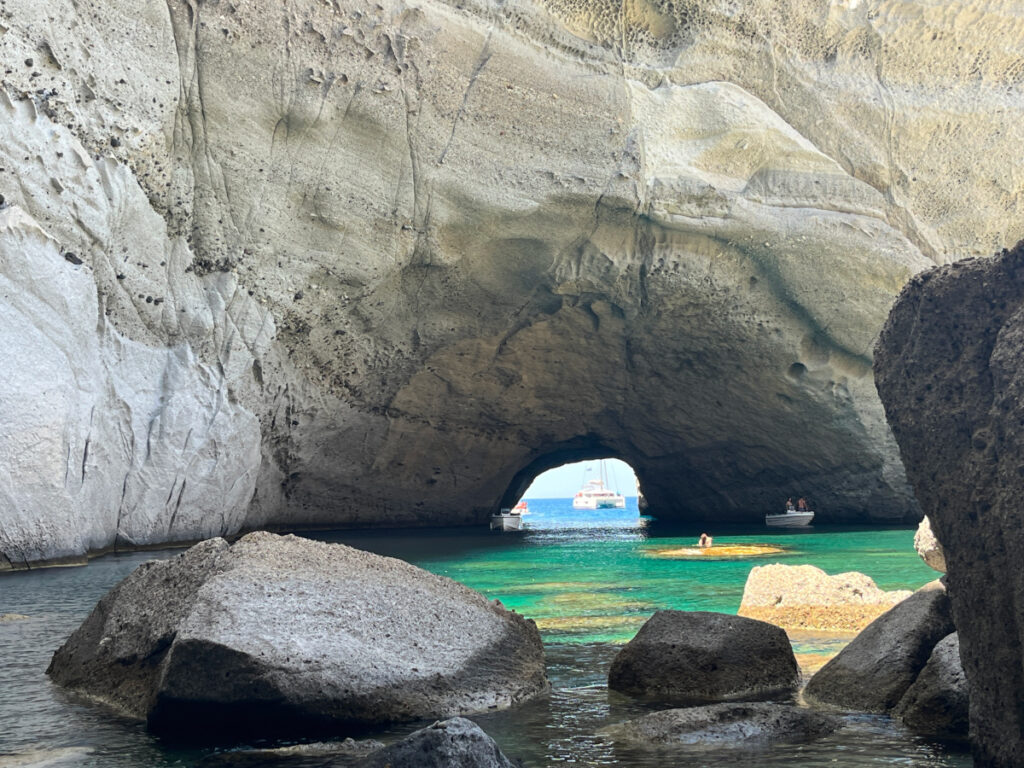
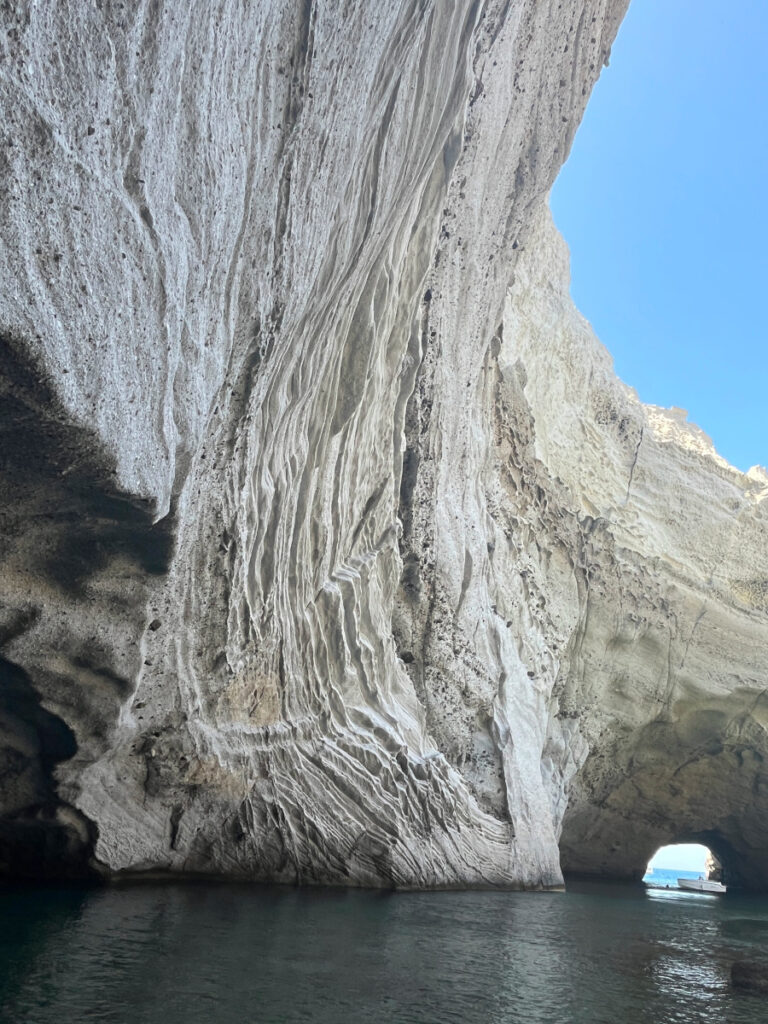
Here we are on the island of Milos, an island with deep mythological roots, and as far as we can tell there is no mythology related to this fantastic place. Why would not Odysseus or any other of those godly people have had adventures here?
In 1820, a French sailor saw a Greek farmer digging for marble to burn to make mortar and noticed that he was uncovering something special. This turned out to be the statue, Venus di Milo, above, which through a long process came to be housed at the Louvre in Paris. This beautiful nude has come for many to stand for idealized beauty in the western world. As we learned on the island of Milos, the statue was almost certainly originally decorated with bright colors. And, now one can see many colorful Venuses in many curio shop windows!
During this sailing cruise, we had the pleasure of the presence to two of our grandchildren, Liam and Cora and Liam had brought two of his friends, Silas and Quinn and Cora brought her girlfriend, Julia. These five teens brought great energy and enthusiasm to our sojourn.
Not only did Aristides take us by dinghy to beautiful sea-side locations but he also was able to arrange vans as needed to take us 9 adventurers to inland locations. Here we saw several traditional Greek hill towns, stumbled into various ceremonies, and saw some of Greece beyond the tourist circuits.

Our sailing week ended up back in Athens with such a strong Meltemi blowing that charters scheduled to leave upon our arrival were postponed. We all went to an AirBnB a few blocks from the Acropolis. There we met up with Annie’s niece Roya and her traveling friend, Avery. Here is a photo of all the seven teenagers we have enjoyed this past couple of weeks. From left: Roya, Avery, Cora, Julia, Quinn, Silas, and Liam.
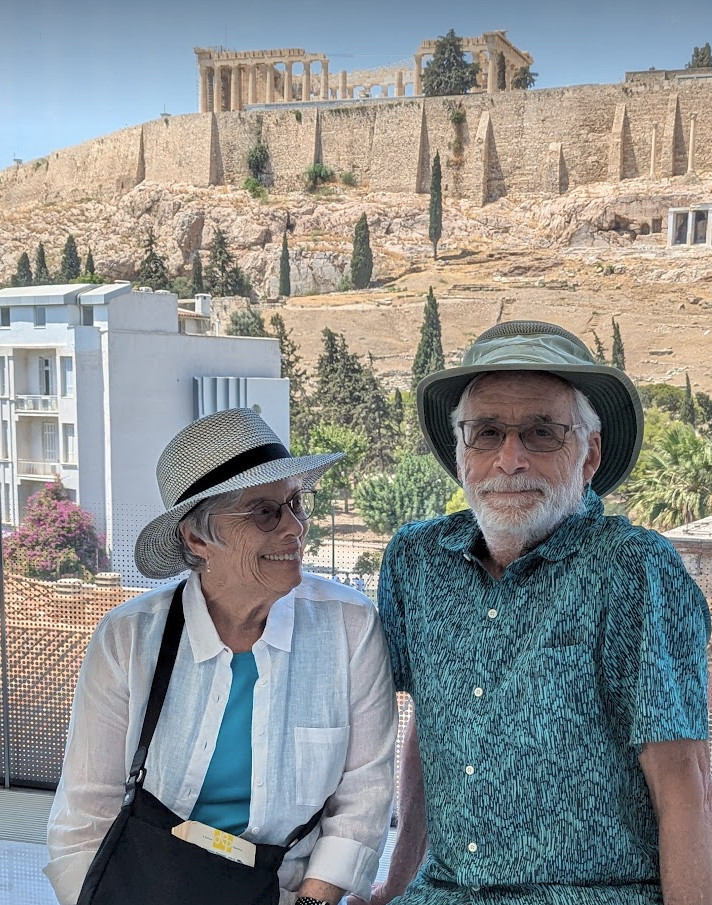
Our trip ended up with a visit to the new Acropolis museum and then a guided walk up and around the Acropolis itself. The museum make a great effort to give visitors views of Greek artifacts even if they are held in other museums around the world. For example, Lord Elgin showed up in Greece is about 1800, while the Ottoman Empire still controlled Greece and he removed many friezes that has once gone all the way around the upper part of the Parthenon. He sailed them off to his estate in England and they eventually found there way to the British Museum. A few years later, with the help of Ms. Bouboulina of Spetes, Greece became independent and then started trying to get Mr. Elgin’s marbles back. Along the way, the Greeks found bits and pieces of these treasures that had been left lying around on the Acropolis. At this moment, the Marbles are still in London and the new museum here in Athens has recreated models of each with real bits poked in here and there around the many gods and humans and horses that are copies of the originals but very beautiful and impressive indeed.
